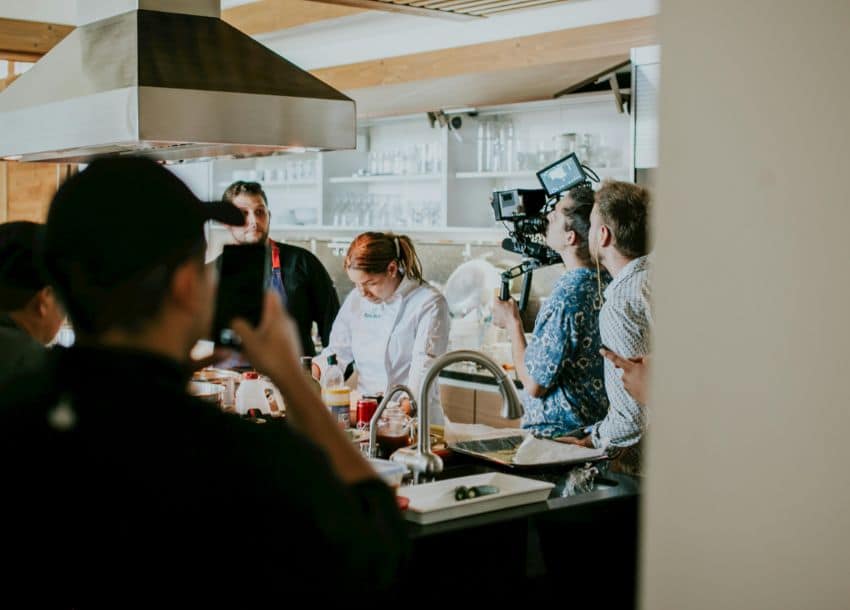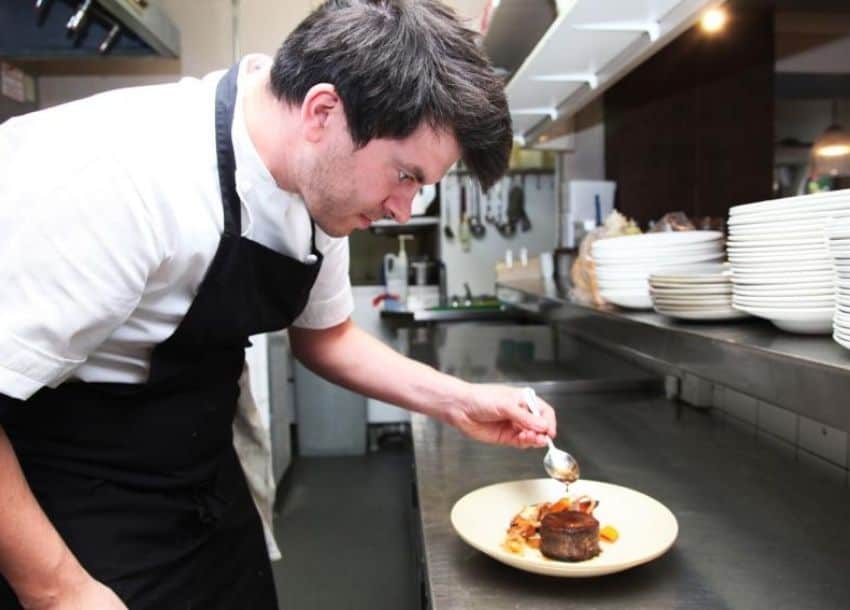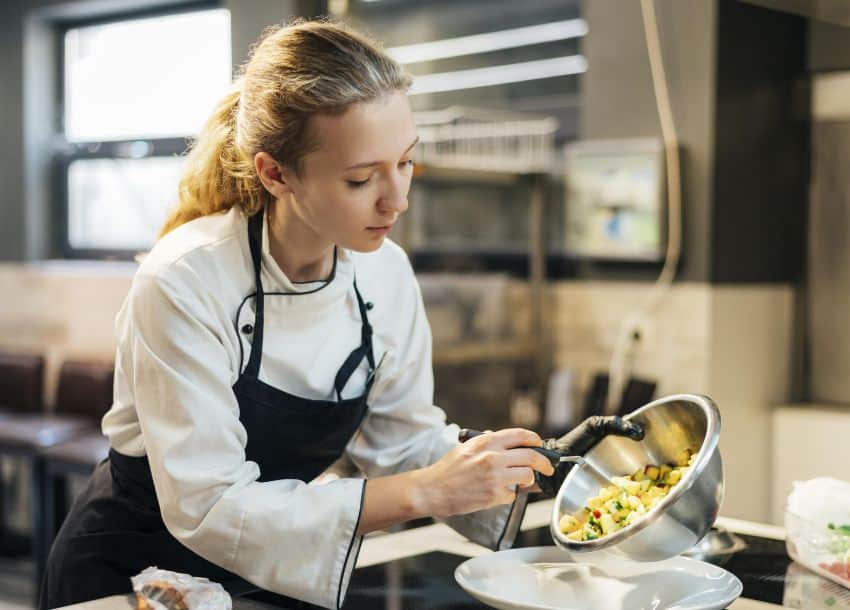Chef de Partie Job Description: Duties, Skills & Career Path
- Career Options
- Aug 20
- Share post
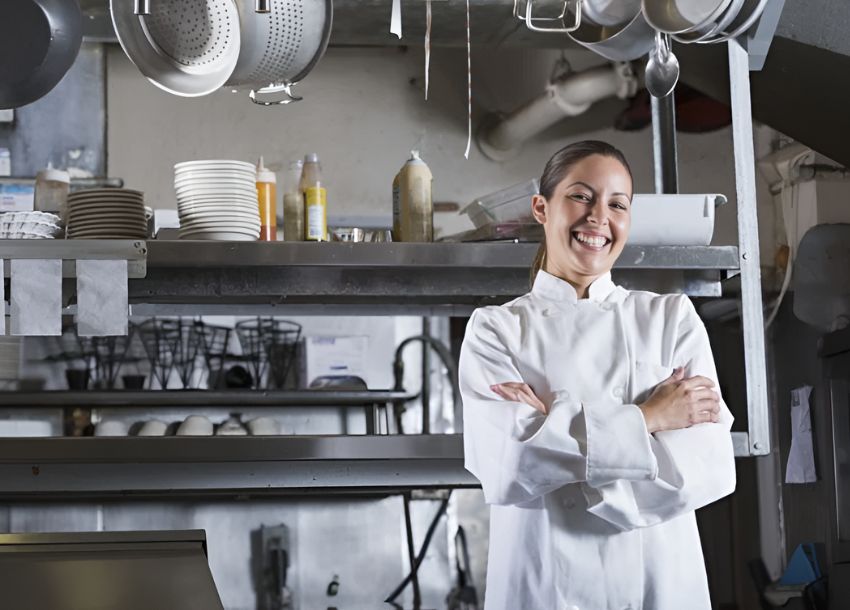
If you’re searching for a clear chef de partie job description, or you’re a commis chef ready for more responsibility, this guide breaks it all down. A CDP isn’t just a job title – it’s a pivotal section role in the kitchen, and a proving ground for anyone with ambitions of becoming a sous chef or head chef.
This guide explains what a CDP actually does, what employers expect, and how this role sets you up for long-term career growth. More than that, it shows why the CDP role is often the moment chefs realise they’re not just cooking anymore – they’re managing.
Chef de Partie job description: what the role involves
A chef de partie is in charge of a specific section in the kitchen – grill, fish, pastry, garnish, veg, etc. You’re responsible for prepping, cooking, plating, and cleaning your station, making sure every dish that leaves it is consistent, clean, and cooked to spec.
You’ll report to the sous or head chef, but you’re trusted to lead your section with confidence. Whether you’re working in a gastropub, hotel, or fine-dining restaurant, being a CDP means running part of the kitchen like it’s your own.
Chef de Partie meaning
The term “chef de partie” comes from the French brigade system and literally means “station chef.” It’s the role that ensures every section runs smoothly, which is why kitchens rely so heavily on skilled CDPs. Without strong chefs de partie, consistency suffers, and service slows down. In many ways, it’s the backbone of a professional kitchen.
Key responsibilities to list in your Chef de Partie job description
These are the tasks that appear in most chef de partie job descriptions:
- Prepare and cook menu items at your designated section.
- Manage mise en place so you’re ready before service kicks off.
- Follow recipes and plating standards set by the head or exec chef.
- Work quickly and cleanly during service, keeping quality tight.
- Train or assist junior chefs and commis working under you.
- Keep your station fully stocked, labelled, and hygienic.
- Enforce food safety and cleanliness standards.
- Communicate clearly with front-of-house and kitchen leads.
This is a high-responsibility role. You’re not just there to chop or stir – you’re there to manage and lead.
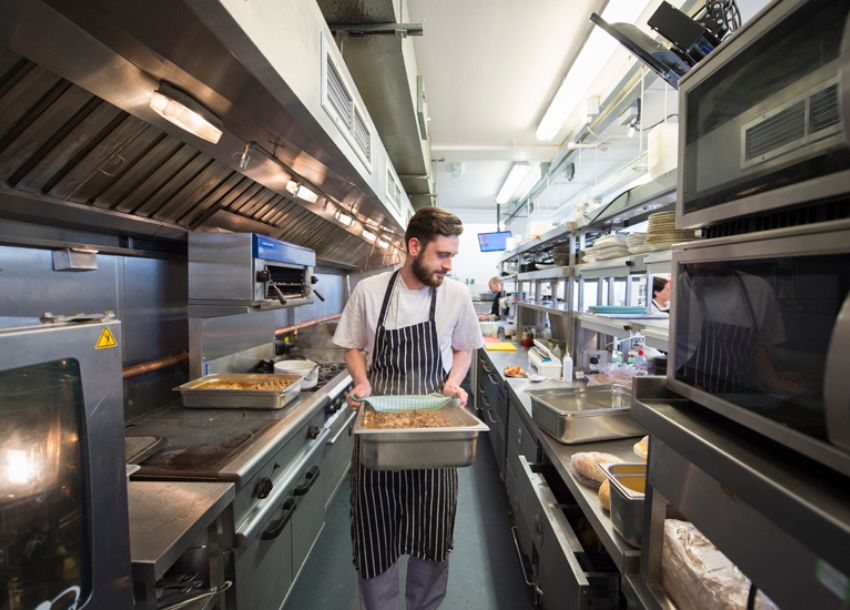
Required skills and experience
Most chef de partie roles will expect:
- 2+ years of kitchen experience (usually as a commis chef).
- Culinary school qualification (e.g. Cert III in Commercial Cookery or NVQ Level 3.
- Knowledge of multiple cooking methods, equipment and service formats.
- Ability to stay calm, clean and quick during busy service.
- Understanding of food hygiene and kitchen safety protocols.
- Strong communication and leadership potential.
Flexibility to work evenings, weekends, and public holidays.
If you’ve ever led part of a service or trained someone junior, you may already be part-way there.
Career path: where this role can take you
Becoming a chef de partie is often the most important promotion in your kitchen career. It’s the moment you go from cook to leader.
From here, you might:
Progress to sous chef, overseeing the whole kitchen when the head chef is away.
- Specialise in an area like pastry, butchery, or sauces.
- Step into Junior Sous or Kitchen Supervisor roles.
- Build the confidence and experience to lead your own team.
Great CDPs get noticed. This is where your reputation starts to really matter. The skills you pick up, managing pressure, running a section, mentoring juniors – are also highly transferable. They’ll serve you well whether you move into fine dining, large-scale catering, or even private chef work later on.
Final thoughts
Being a successful chef de partie demands more than technical skill: it calls for composure under pressure, clear communication and the confidence to run a section as if it were your own kitchen.
For employers, a great CDP can stabilise service, mentor junior staff and set the tone for consistency. For chefs, it’s the proving ground that shapes your reputation and builds the foundation for a long career in hospitality.
–
FAQs – Chef de Partie job description
What qualifications do I need to become a chef de partie?
You don’t always need formal training, but most CDPs have completed a Cert III in Commercial Cookery (AU) or NVQ Level 3 (UK), plus hands-on experience in a professional kitchen.
How much experience do I need?
Typically 1–2 years as a commis chef. Some kitchens may promote faster if you’re reliable and proactive.
What’s the average salary in the UK and Australia?
- UK: £23,000–£30,000/year. Top city roles may pay up to £35,000.
- Australia: AU$70,000–$80,000/year. Senior CDPs can earn AU$85K+.
Sources: Talent.com PayScale
If you’re currently looking for your next CDP job opportunity, check out: How to Write the Perfect Chef CV.
What’s the difference between a demi chef de partie and a chef de partie?
A demi chef de partie is a step below CDP. You’ll assist and shadow the full CDP on a specific section.
What’s next after being a chef de partie?
Most chefs move into sous chef roles. Others branch into specialist areas (pastry, R&D, training) or explore leadership in larger kitchen teams.
Comments
Add a comment
Leave a Reply · Cancel reply
You must be logged in to post a comment.

